Planning a 7-day Ireland itinerary using only public transport can be a pain in the backside… So, we’ve done all of the hard work for you!
We’ve spent 25+ years travelling around Ireland…
The itinerary below has taken that experience (and the many mistakes we made along the way) to create an itinerary that we’re confident you’ll love!
In a nutshell, this 7-day itinerary:
- Has been meticulously planned for those only using public transport
- Has an hour-by-hour itinerary for each day to save you time/hassle
- Follows logical routes that take you to hidden gems, tourist favourites and great pubs and restaurants
Who this itinerary will suit

Now, before you scroll down, take 10 seconds to look at the graphic above – each of our road trip itineraries have been tailored to specific needs.
This road trip is specifically for those of you:
- Starting in/near Shannon
- Using public transport and organised tours
- Looking to explore at a slow pace
- With a low level of fitness (i.e. it avoids long walks and hikes)
- Remember, we have hundreds of different itineraries here if this one doesn’t suit you
An overview of this itinerary

The map above gives you a very high-level overview of where this route will take you.
It uses several bases (e.g. Cork for 3 nights) and provides you with day-long road trips you can head off on, so you avoid having to change accommodation constantly.
Now, I’ll stop rambling on – here’s a day-by-day insight into each of the days below!
Day 1: Arrive in Shannon and head to Limerick
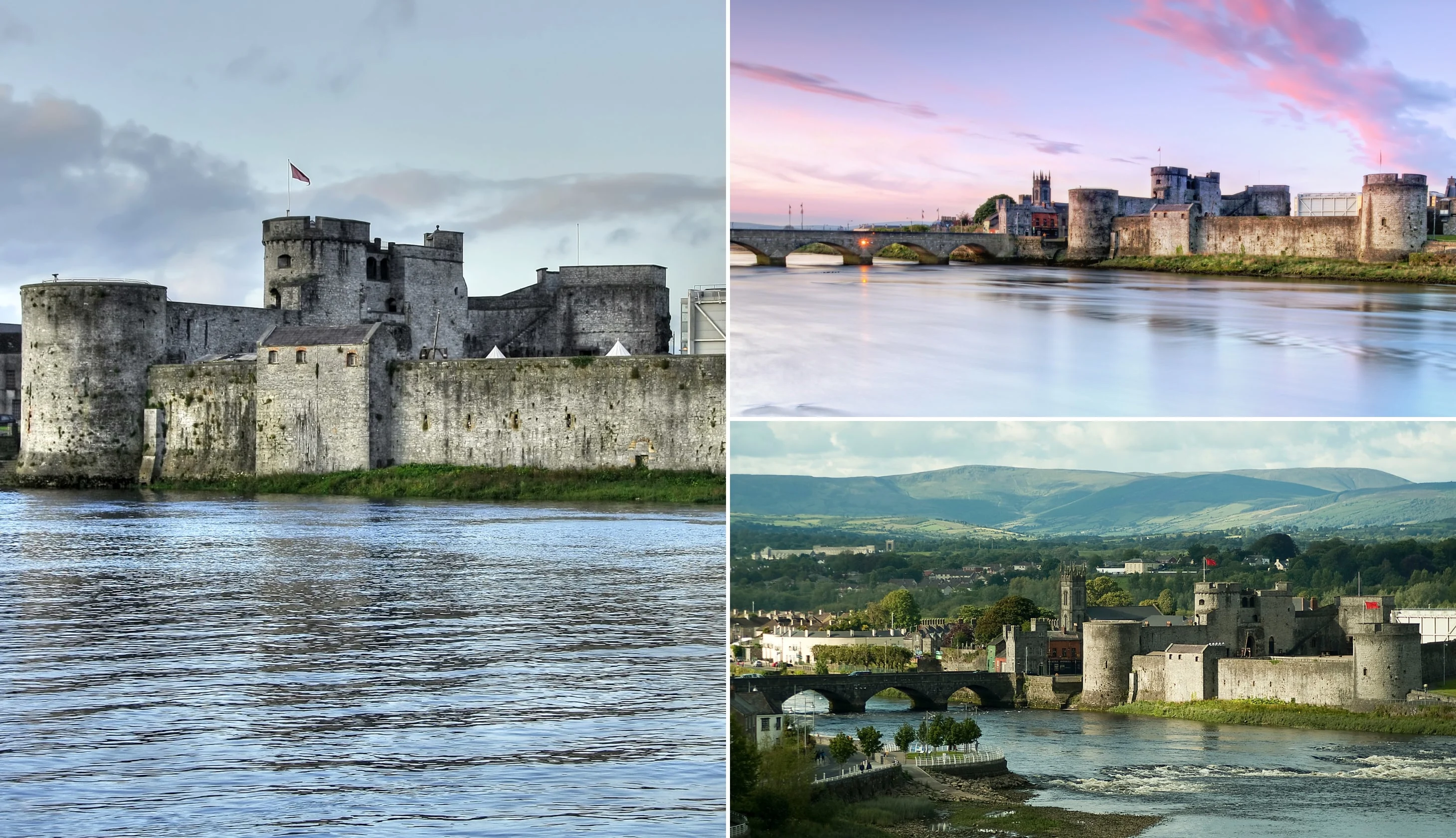
Photos via Shutterstock
Day 1 of this 7-day Ireland itinerary is going to be very dependent on the time that you arrive into Shannon.
For this itinerary, we’re going to make an assumption that you’ve landed in the morning and are ready to explore from mid-afternoon.
After you touch down, make your way to Limerick City. You’re going to be spending one night here before moving on to Killarney on day 2.
Recommended accommodation in Limerick
- Budget: Woodfield House Hotel (15-minute walk from the city with excellent reviews) and Shelbourne House (cosy spot 20 minutes walk from the castle)
- Mid-range: Limerick City Hotel (very central hotel near the river) and The Bedford (very central boutique townhouse with exceptional reviews)
- Luxury: The Savoy Hotel (central, boutique 5-star) and The George (central spot on O’Connell Street in Limerick city centre)
Stop 1: Bus or taxi to Limerick City

Photo top right: Via Bus Eireann. Others via Google Maps
Welcome to Limerick City! You will be staying in Limerick tonight and the last night of your trip so try to make the most of this beautiful city. You can take the bus or a taxi to get to Limerick City from Shannon. We have outlined your options below.
Option 1: Bus
You can take Bus Eireann or Expressway into Limerick City. The buses leave just about every hour and cost around €10.
Option 2: Taxi
A taxi from the airport will take you around 22 minutes and cost anywhere from €35 to €50. There is information at the airport about getting a taxi.
Stop 2: Lunch
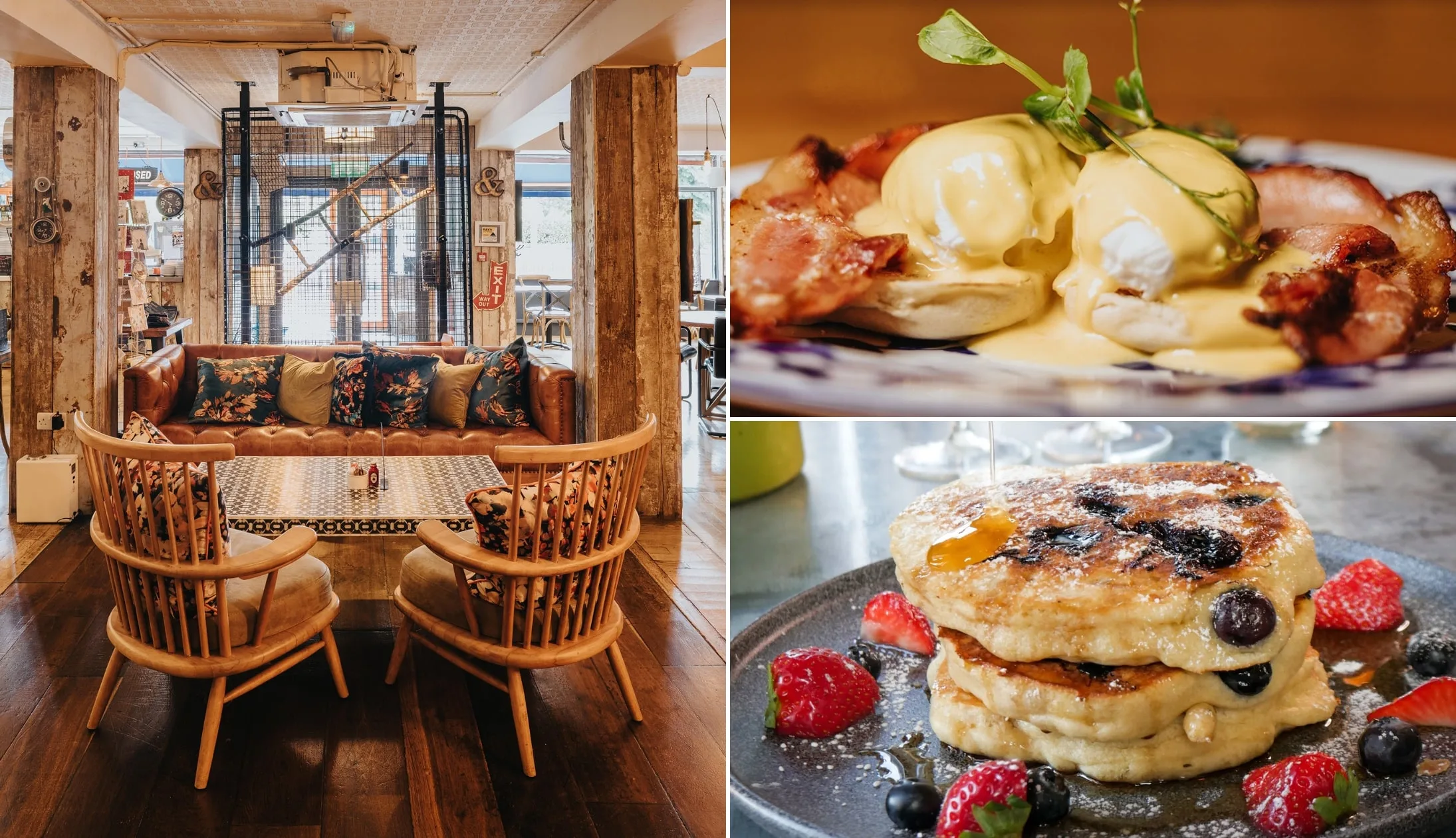
Photos via Hook and Ladder on FB
It’s probably close to lunchtime by now and we’ve got a couple of suggestions for you. We usually head to Coqbull, The Buttery, or the Hook and Ladder when we’re in the city. Coqbull is a casual dining restaurant serving up top-notch burgers and wings. The Buttery is our go-to for brunch, and the Hook and Ladder (the one on Sarsfield Street) has delicious sandwiches and a mouth-watering vegan burger.
Stop 3: King John’s Castle

Photos via Shutterstock
Head off to King John’s Castle, a 10-minute walk from the centre of the city. The 13th-century castle sits on King’s Island, on the banks of the River Shannon. The castle is in fantastic condition and is one of Europe’s best-preserved Norman castles.
King John’s Castle was built under the orders of King John, the “Lord of Ireland” and Richard the Lionheart’s brother. It was built in between 1200 and 1212, with numerous repairs and extensions over its 800-year history.
The castle was a military stronghold with solid curtain walls, turrets, and strong fortifications. However, despite this, it sustained heavy damage during the 1642 siege of Limerick (the first of five Limerick sieges during the 17th century). There’s a fantastic exhibition on the siege inside the castle if you’d like to learn more.
Most people spend around one and half hours visiting the castle and visitor centre. You can have a look at the interactive exhibits, try on historic costumes, and in the summer, play Medieval games in the courtyard!
Stop 4: St Mary’s Cathedral

Photos via Shutterstock
The next stop is St. Mary’s Cathedral. It’s a 3-minute walk from King John’s Castle, and you probably passed it on your way to the castle. The cathedral was founded in 1168, making it even older than King John’s Castle and the oldest building in Limerick that’s still in use today!
The cathedral contains six chapels, but if you’re pressed for time, the Lady Chapel is a must-visit. The Lady Chapel contains its original pre-reformation altar, which is four metres long and weighs three tons. During the mid-1600s, the altar was removed and dumped by Oliver Cromwell’s troops when they captured the city. But, by some miracle, it was recovered in the 1960s and reinstated to its rightful place.
Another highlight of St. Mary’s Cathedral are its misericords (small wooden carvings). They are the only complete set in Ireland and the only remaining pre-Elizabethan carvings.
Stop 5: The Hunt Museum
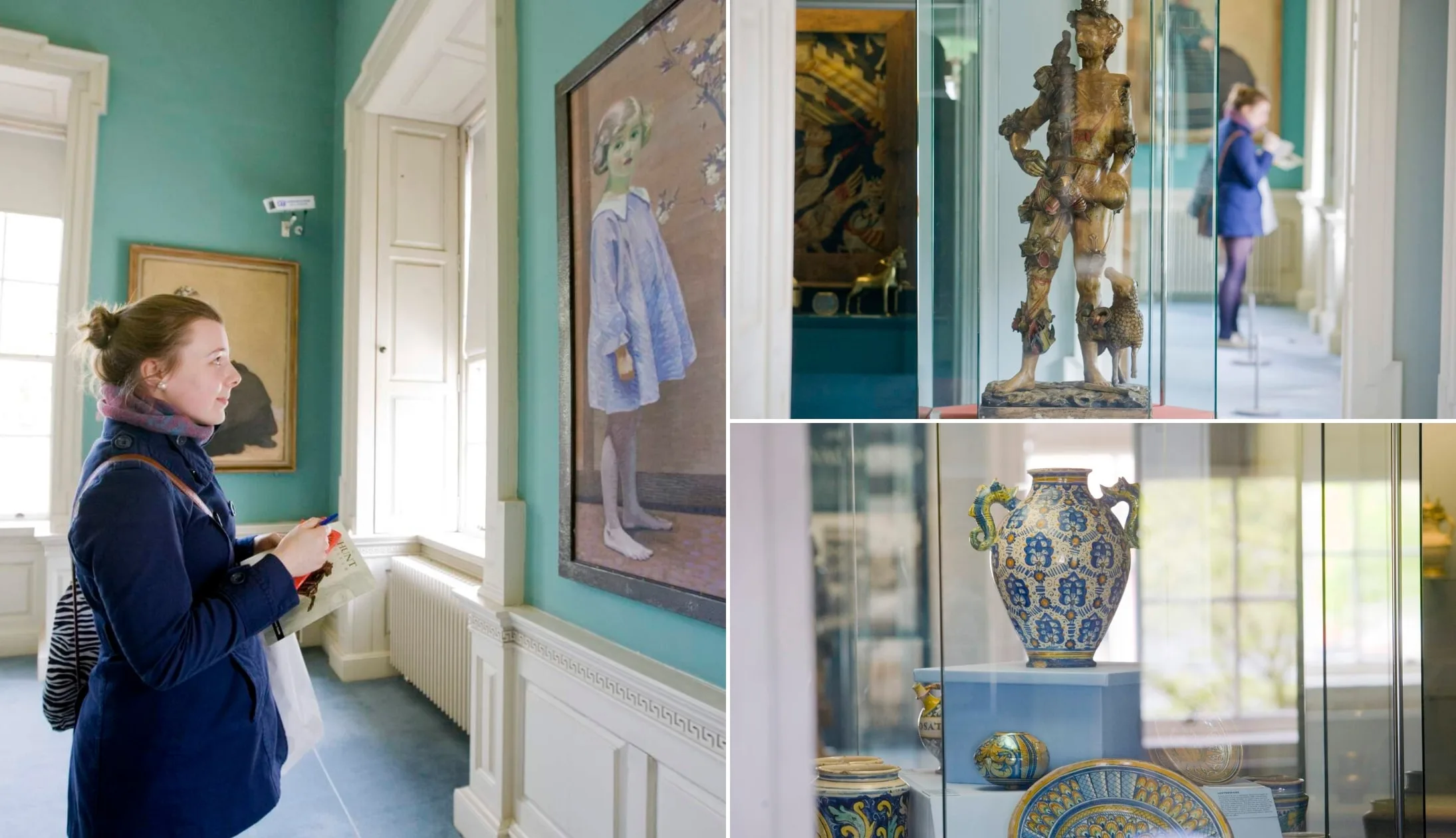
Photos via Tourism Ireland’s Content Pool
It’s time to walk another 3 minutes to the Hunt Museum. Again, you probably already passed it on your way to the castle.
The Hunt Museum was established after John and Gertrude Hunt decided to donate items from their personal collection to the people of Ireland.
The museum has a large collection with over 2,500 artefacts, including pieces from Ancient Egypt and Stone-Age Ireland. Highlights of the collection include works by Picasso and dresses by famous Irish fashion designer Sybil Connolly.
Recently, the museum launched the “Museum in a Garden”, a beautiful garden dotted with 3D printed replicas of historical artefacts (you can grab a ticket online here).
Stop 6: Dinner, drinks and live music
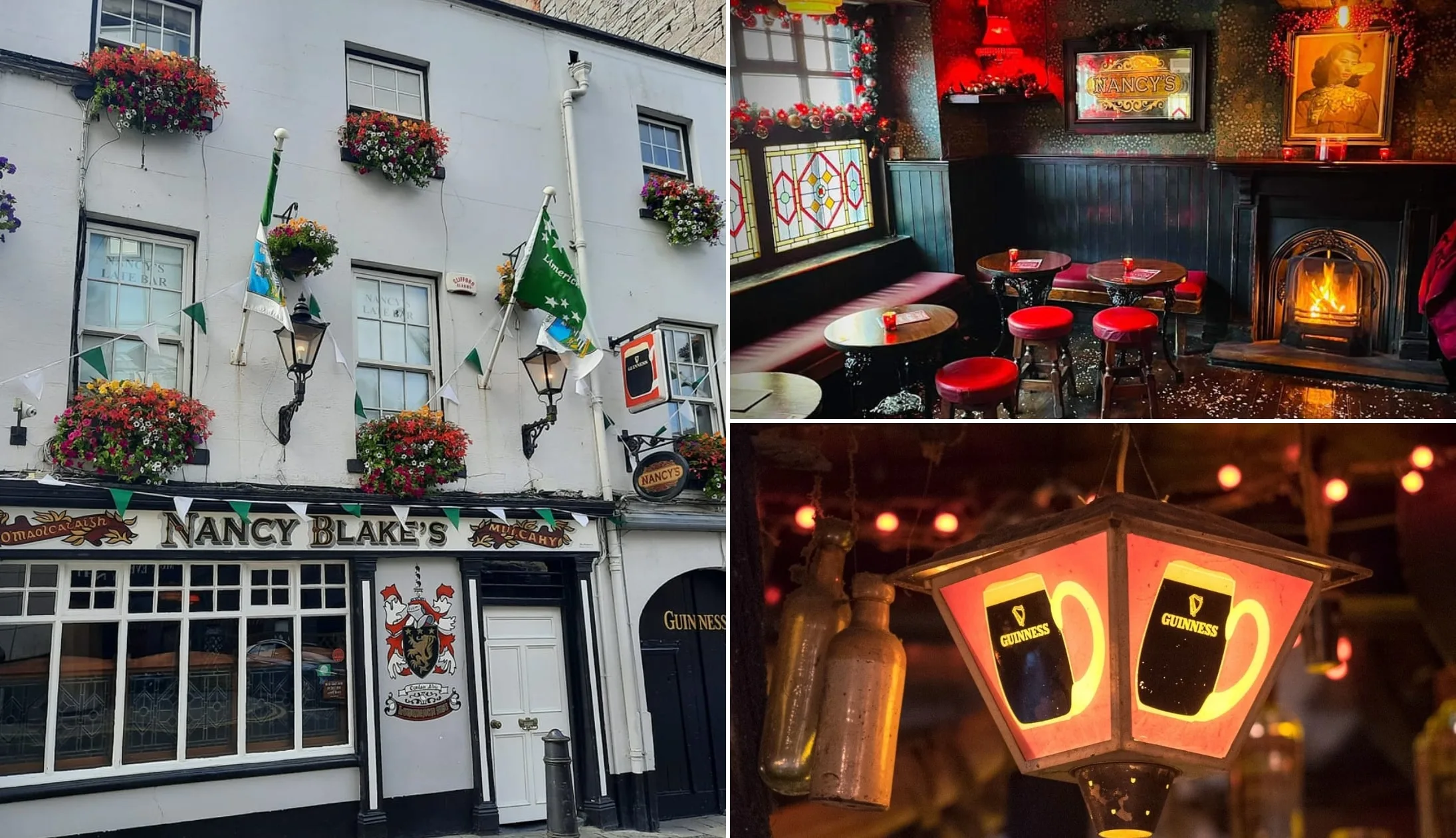
Photos via Nancy Blakes on FB
There’s some excellent restaurants in Limerick and there’s some mighty old-school pubs in Limerick, too.
Our Limerick food recommendations
Our absolute favourite spot for dinner is the Curragower. It’s right on the banks of the River Shannon with beautiful views of King John’s Castle across the water.
Grab some delicious pub grub like the roasted lamb rump or the lightly breaded scampi, then stick around for some pints after dinner.
Otherwise, we also like SpitJack (the rotisserie pork belly is a customer favourite) and The Locke (they have a delicious steak and ale pie and great vegetarian options).
Our Limerick pub recommendations
For drinks, again, we love the Curragower but Tom Collins is another lovely pub.
Another great trad pub is Nancy Blakes and depending on the night, they might have some music on. However, if you don’t mind heading a little out of the city centre, then Charlie Malones is a must-visit.
In our opinion, it’s one of Limerick’s best-kept secrets, with a real old-school pub vibe.
Limerick is a great city for trad music. The Locke often has music and even dancing on some nights if you’re lucky! Dolans is also great, but it’s a short walk from the city centre.
Day 2: Killarney

Photos via Shutterstock
It’s day 2 of your 7 days in Ireland itinerary, and today, you’ll be heading to Killarney.
You’ll be spending three nights in this peaceful town which sits on the outskirts of a beautiful national park.
It’s a long-ish journey to Killarney from Limerick, so grab a hearty breakfast before you get on the road. The Story Cafe is a lovely little cafe with a cosy interior and some great food.
Recommended accommodation in Killarney
- Budget: New Street Lodge (basic accommodation a stone’s throw from the National Park) and Castle Lodge (cosy B&B a 5-minute walk from Killarney House)
- Mid-range: Killaran House (exceptional accommodation in a great location) and Killarney Avenue (right by the park with excellent rooms)
- Luxury: Muckross Park Hotel & Spa (an elegant hotel a 10-minute walk from Muckross Abbey) and The Killarney Park (old-worlde style 5-star near the train station)
Stop 1: Get the bus or train to Killarney
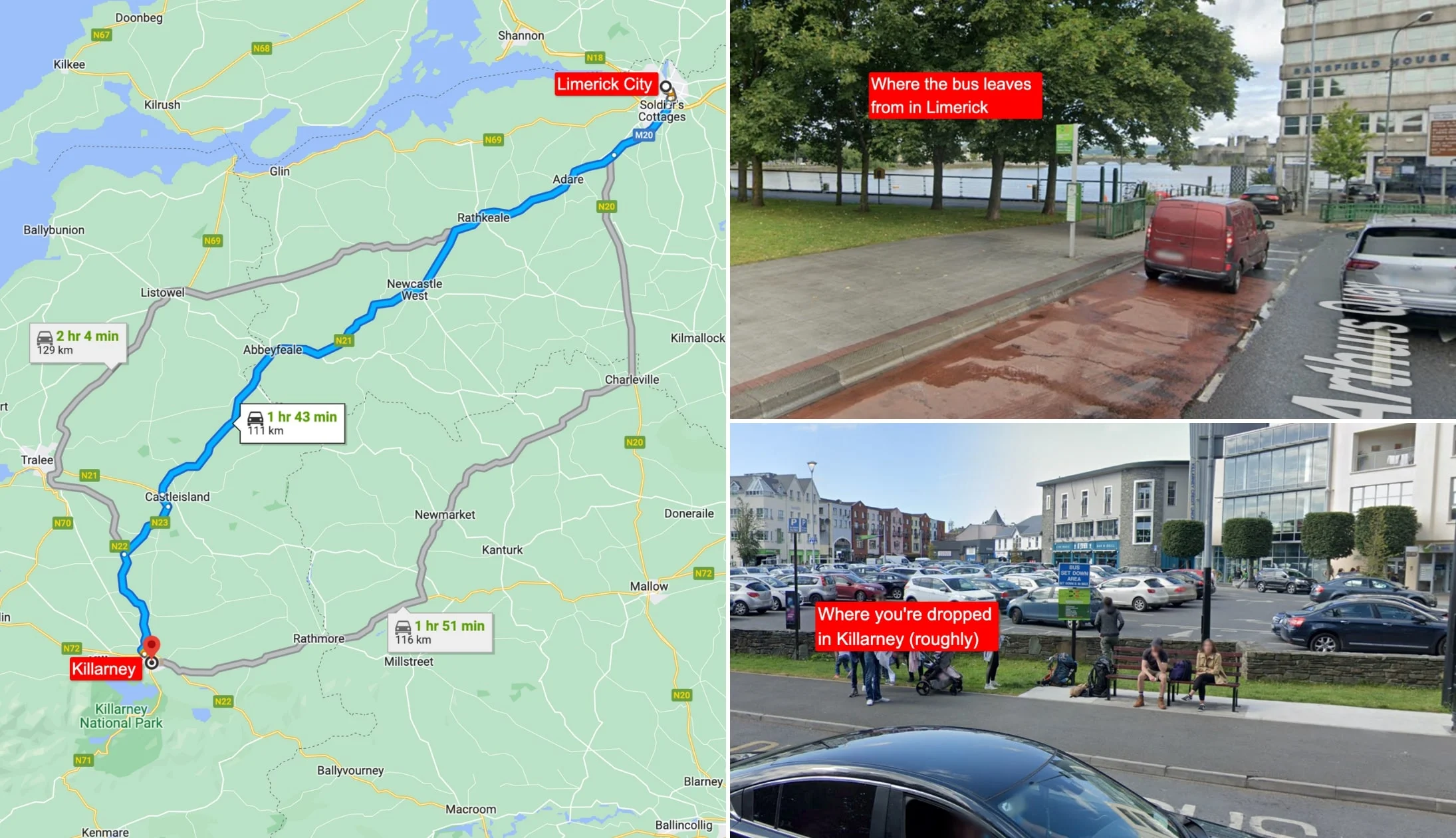
Photos via Google Maps
You have two options to get from Limerick to Killarney. We tend to opt for the bus, as it’s direct and an awful lot quicker.
Option 1: Train
You can technically take the train from Limerick to Killarney, but we recommend that you take the bus instead.
The train between the two takes at least three hours and has two changes (usually Limerick Junction and Mallow). The bus is a lot quicker and more straightforward.
Option 2: Bus
We recommend that you take the Dublin Coach to Killarney. I know what you’re thinking, Dublin Coach? But I’m in Limerick going to Killarney! That’s the name of the bus company.
They are big green buses that are comfortable, affordable, and quick. The trip from Limerick to Killarney takes one hour and 40 minutes leaving from Arthurs Quay in Limerick City and arriving in the middle of Killarney.
The bus stops a couple of times so make sure you get off at the right stop.
Stop 2: Arrive in the town and try and check into your accommodation
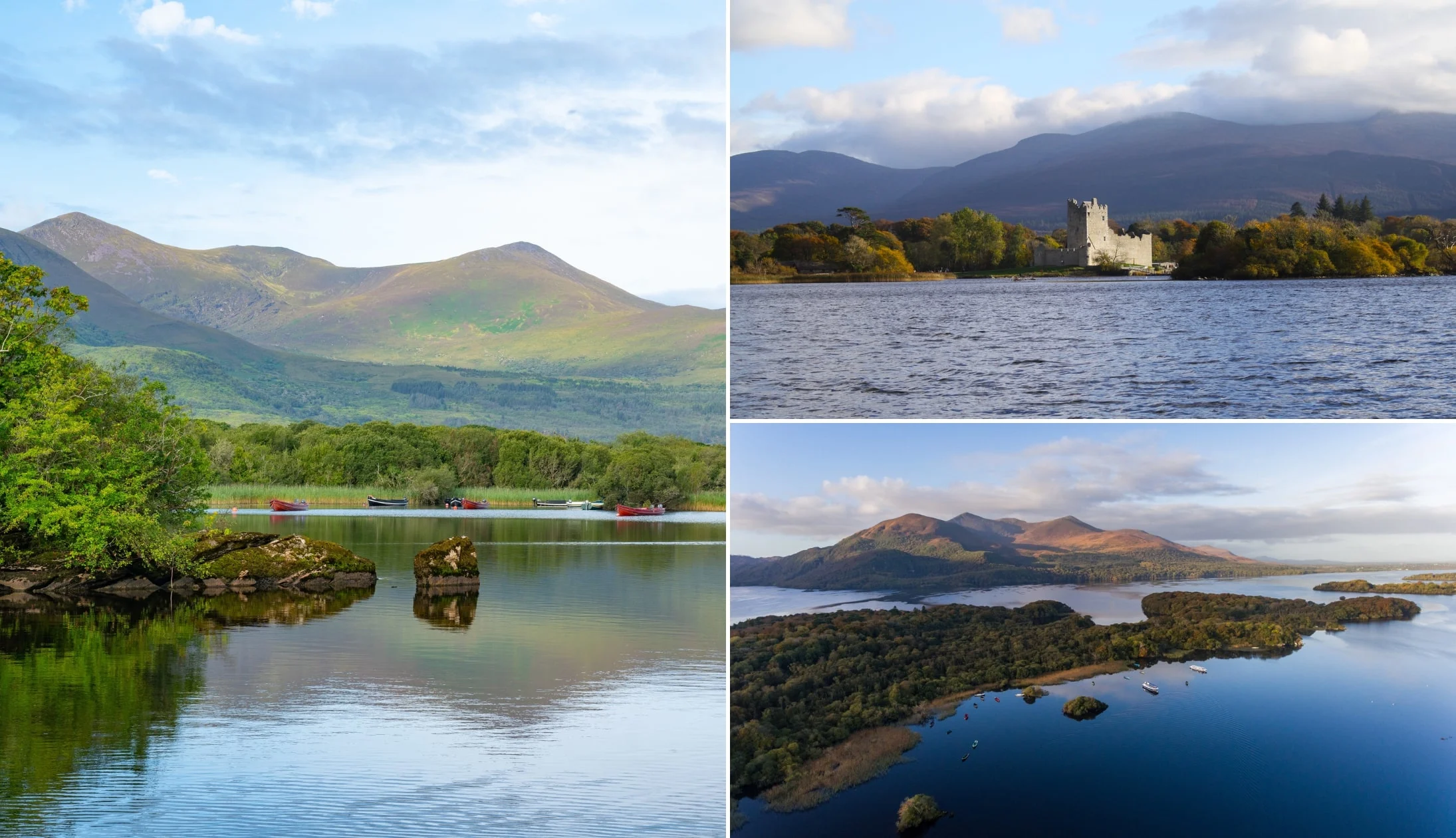
Photos via Shutterstock
Welcome to Killarney Town! If you can, try and check into your accommodation – this will likely depend on when you arrive, as some places won’t allow you to check in until the afternoon.
If you feel like stretching your legs a bit, consider grabbing a coffee to go from Bean in Killarney then going for a little wander.
When you’re ready, it’s time to explore the area and we’ve three different ways of exploring for you to choose from.
There’s endless things to do in Killarney but a combination of the options below will help you see a good chunk of the area.
Option 1: The jaunty

Photos via Shutterstock
Another great, and very unique way to explore Killarney, is via one of the traditional jaunting cars (i.e. the horse and cart).
On this 1-hour guided jaunty tour you’ll:
- See Ireland’s highest Mountain Range – the MacGillycuddys
- Trot past the 15th-century Ross Castle
- See the impressive St Mary’s Cathedral
- Learn about Killarney from a traditional Jarvey guide
Option 2: The Lakes of Killarney boat Cruise

Photos via Shutterstock
Arguably one of the most popular tours in Killarney is this 1-hour (and very reasonable) boat tour that takes you around Killarney’s lakes.
The tour takes place on a glass-covered boat with heating and it gives you a completely different perspective of the national park.
You’ll drift by the 6th-century Innisfallen Monastery, see the highest mountain in Ireland and, at times, see Red Deer and White Tailed Eagles.
Stop 3: Dinner, drinks and music in Killarney
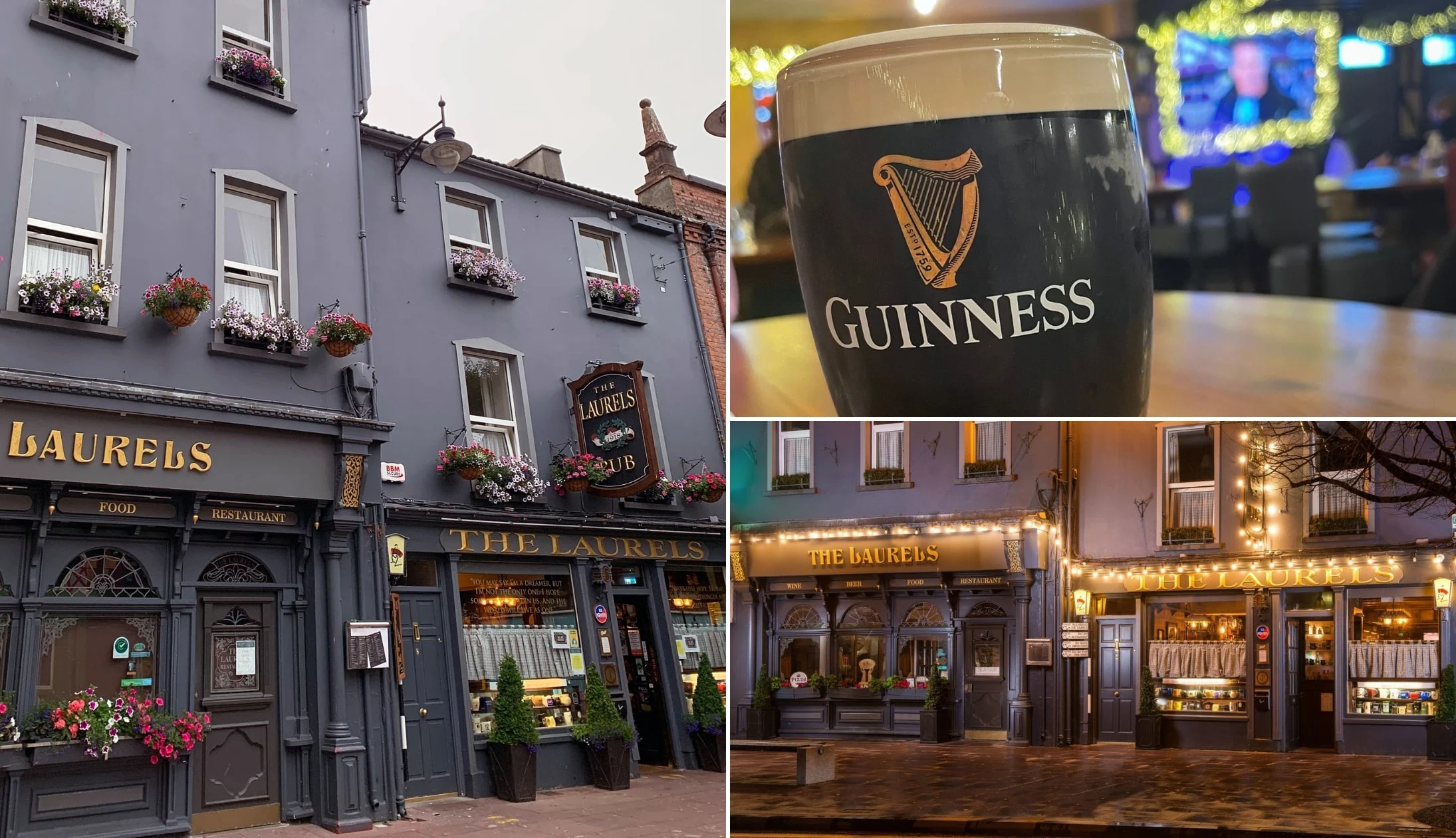
Photos via The Laurels on FB
Freshen up at your hotel, then head out for a well-deserved dinner!
It’s been a long day and, luckily enough, there’s plenty of places to kick back in for a fine feed and a tipple.
Our dinner recommendations
There are some exceptional restaurants in Killarney. Our favourites are the Mad Monk (they serve amazing seafood like sizzling crab claws and deep water prawn tagliatelle), Kitty O’Se (splash out on the Seafood Tower to share), and Murphy Browns (hearty Irish dishes like roasted duck and fish and chips).
Our pub recommendations
There’s some mighty old-school pubs in Killarney, too. For post-dinner drinks, head to JM Reidy’s, the Laurels Pub, or O’Connors.
They all have a traditional pub feel and are a great choice for a pint. JM Reidy’s has a lovely courtyard which is great in the summer, and O’Connors is perfect if you feel like cocktails.
If you want to hear some live music, JM Reidy’s and O’Connors often have live music sessions.
Day 3: The Ring of Kerry
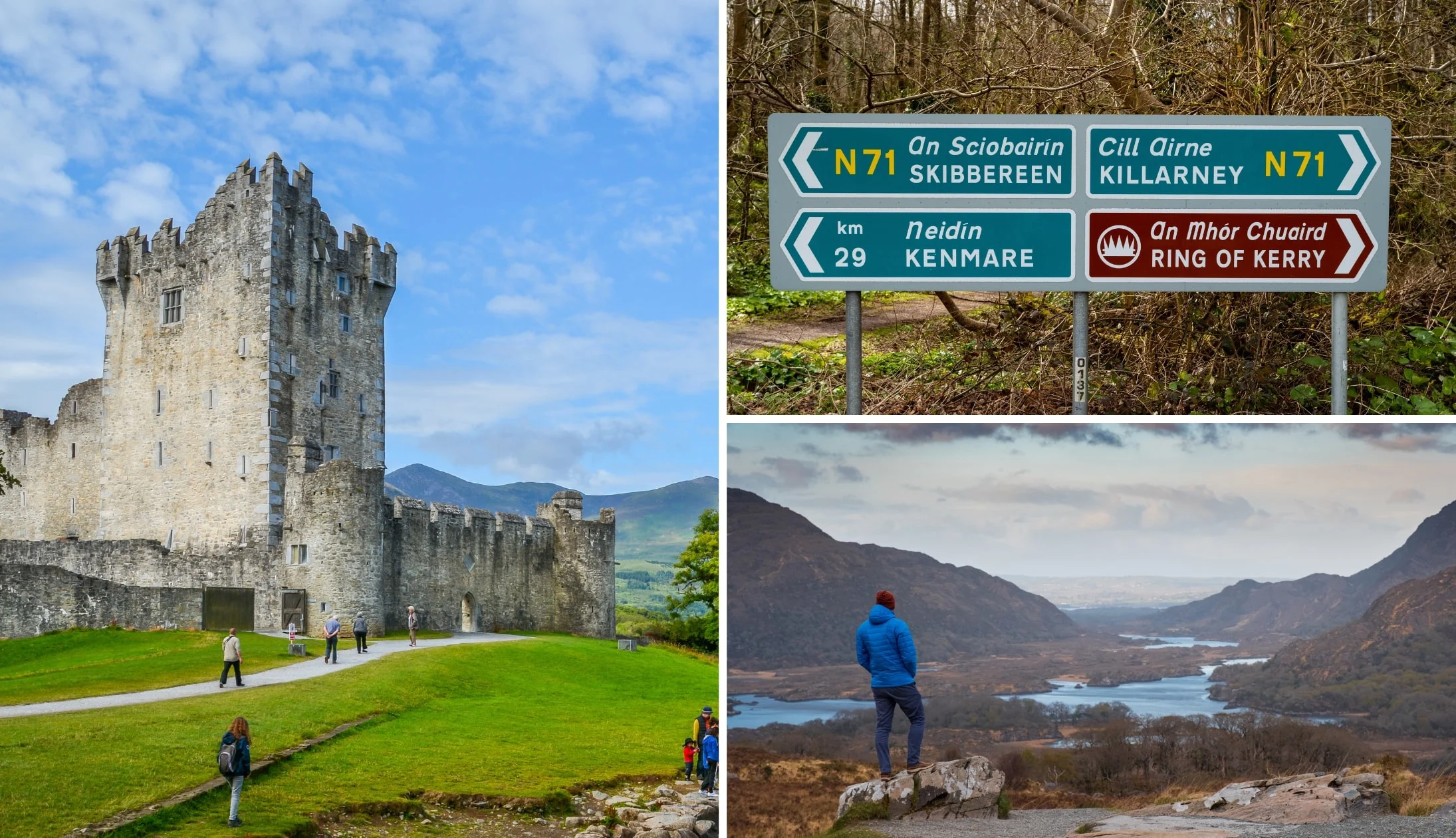
Photos via Shutterstock
It’s day 3 of your 7 days in Ireland, and today you’re heading off for an adventure on the stunning Ring of Kerry!
Be prepared for some amazing views and lovely beaches (if you’re visiting in the summer, you may want to bring swimming clothes and towels).
We’re going to recommend that you take this 7-hour Ring of Kerry day trip that’ll take you to all of the route’s highlights.
We’ll take you through the stops below, but note that 1, you may not always physically stop at all of these sights and 2, these tours are subject to change, so always check with the provider in advance.
Stop 1: Killorglin

Photos via Shutterstock
Killorglin is a lovely little town on the Ring of Kerry. You’ll just be passing by, but keep an eye out of the window as it’s lovely.
The town is known for its annual Puck Fair, the country’s oldest street festival. It’s held every year in August, and following tradition, the fair starts with crowning the “king” goat
Stop 2: Dingle Bay and Inch Beach

Photos via Shutterstock
As you pass through Killorglin, you’ll be driving alongside Dingle Bay and passing by Inch Beach, a long spit that juts out across the bay from the other side of the water.
Inch is one of Kerry’s most popular surf spots and you should be able to see surfers attempting to tame the waves here from afar.
Stop 3: Skellig views
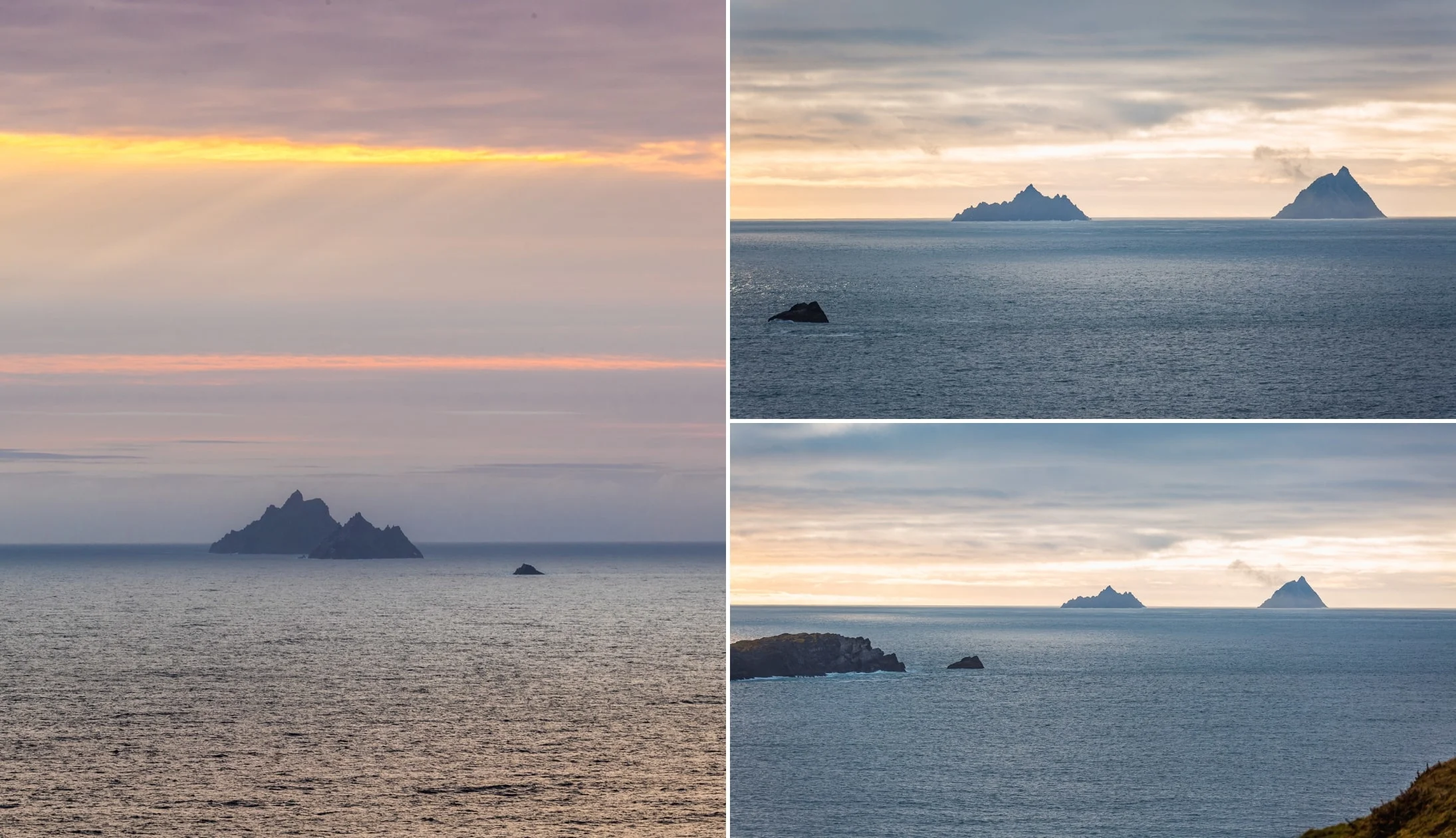
Photos via Shutterstock
As you make your way to Waterville, you’ll be passing by Ballinskelligs Bay, where on clear days, you’ll be able to spot the Skellig Islands off in the distance.
There are two islands – Skellig Michael and Little Skellig. The former shot to fame in recent years when scenes from a Star Wars movie were filmed on the island.
Stop 4: Waterville

Photos via Shutterstock
Keep an eye out of the window as you pass through Waterville and discover why it was Charlie Chaplin’s favourite village in Ireland.
Chaplin first visited the village in 1959 after a recommendation from his friend Walt Disney!
Stop 5: Sneem

Photos via Shutterstock
You’ll be making a stop in Sneem, a colourful little village on the Sneem Estuary. The river flows right through the middle of the village and there’s a lovely stone bridge connecting both sides.
The bridge dates back to 1810, with five arches and a staircase down to the water.
Stop 6: Kenmare Bay

Photos via Shutterstock
As you drive out of Sneem on the Ring of Kerry road, you’ll be passing alongside Kenmare Bay, a long narrow bay that borders County Kerry and Cork.
This stretch of road hugs the coast and, while much of it is engulfed by tall trees, offers gorgeous views at times.
Stop 7: Moll’s Gap

Photos via Shutterstock
Moll’s Gap is also known as Céim an Daimh in Irish or ‘Gap of the Ox’, but it gets its nickname after Moll Kissane, owner of a local shebeen (unlicensed pub).
The pub was established in the 1820s when the road was being built, and Moll’s homemade poitin (a strong liquor sometimes made from potatoes) was a favourite with the construction workers!
Stop 8: Ladies View
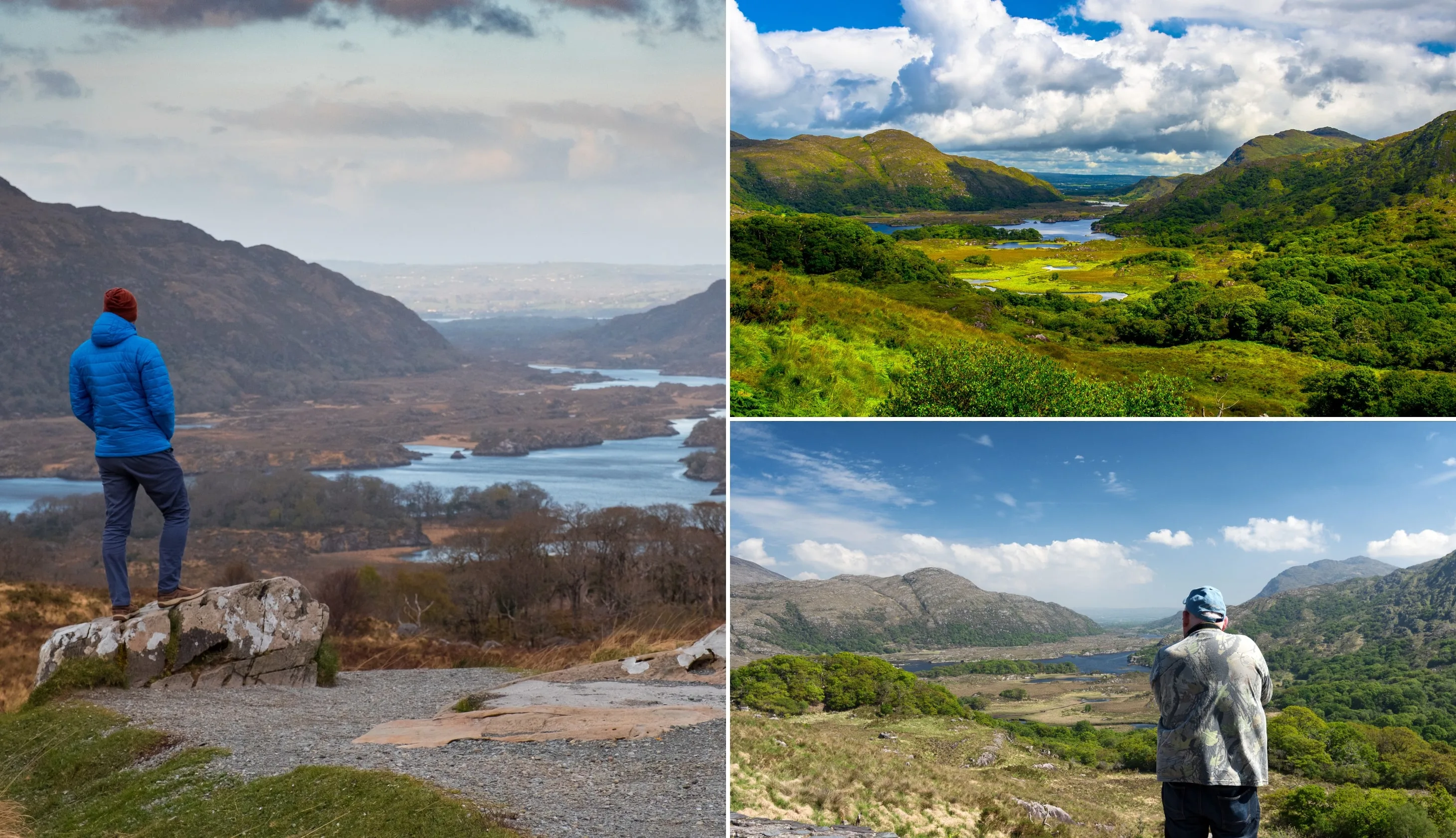
Photos via Shutterstock
Ladies View is one of the most popular stops on the Ring of Kerry, with roadside parking directly facing the view.
The viewpoint was named in honour of Queen Victoria’s ladies-in-waiting who were in awe when they visited in 1861 during a royal visit.
The view looks out over the Upper Lake with mountains rising up on either side. From Molls Gap and Ladies View, you’ll have views over the Black Valley, an isolated valley which was the last place in Ireland to get electricity!
From the previous viewpoint, try to spot the wonderful lakes of Killarney. There are three lakes in total: Lough Leane, Middle Lake (also called Muckross Lake), and Upper Lake.
Ladies View has fantastic vistas of the Upper Lake.
Stop 9: Torc Waterfall
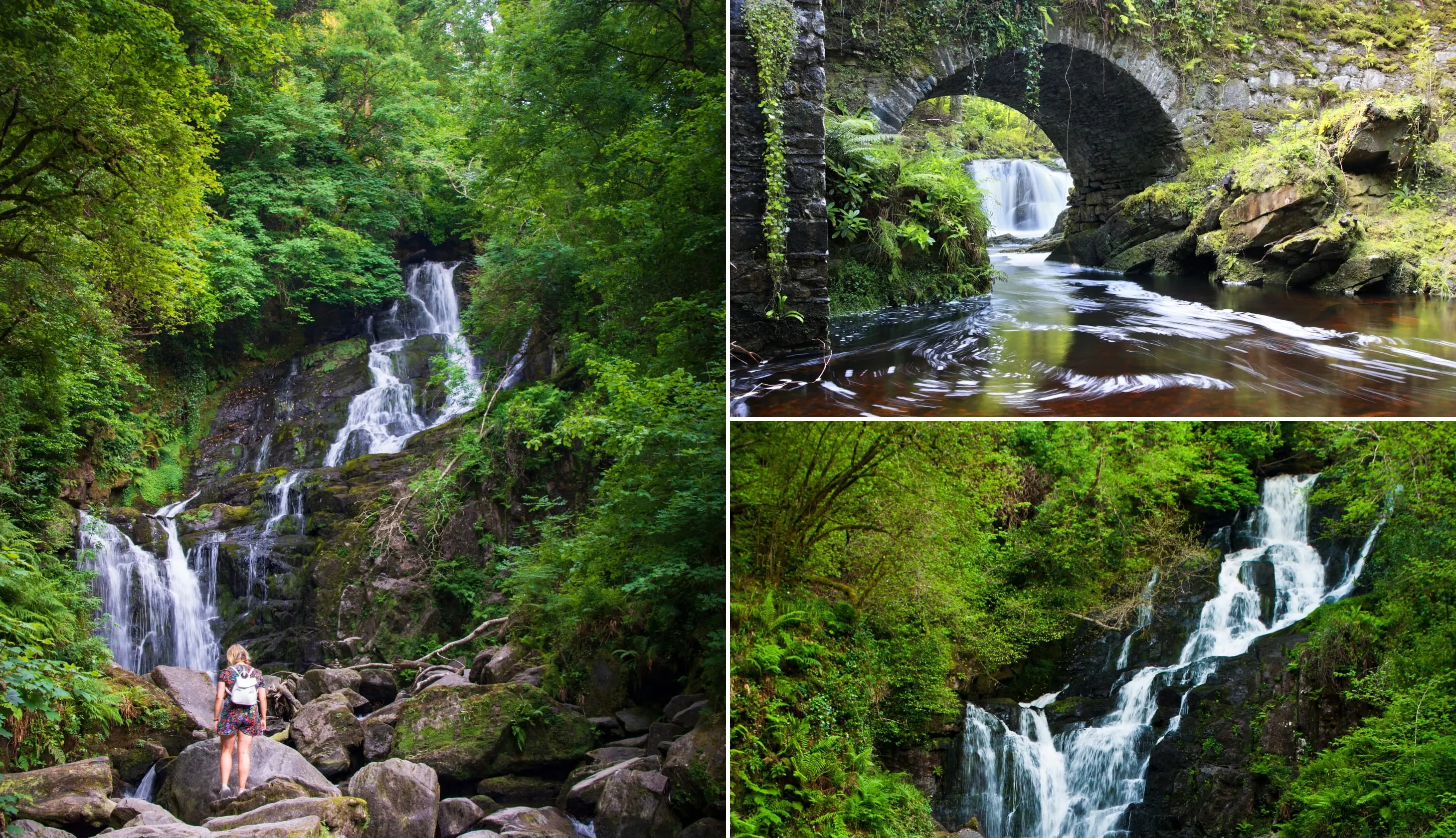
Photos via Shutterstock
According to local folklore, Torc Waterfall was home to a man who was cursed by the devil to turn into a boar each night.
When his secret was revealed by a farmer, the man burst into flames and retreated to the Devil’s Punchbowl.
The waterfall is breathtaking, tumbling for around 20 metres down rocks and boulders.
Stop 10: Back to Killarney for the night

Photos via Shutterstock
After the waterfall, the tour makes its way back to Killarney.
Our dinner recommendations
There are some exceptional restaurants in Killarney. Our favourites are the Mad Monk (they serve amazing seafood like sizzling crab claws and deep water prawn tagliatelle), Kitty O’Se (splash out on the Seafood Tower to share), and Murphy Browns (hearty Irish dishes like roasted duck and fish and chips).
Our pub recommendations
There’s some mighty old-school pubs in Killarney, too. For post-dinner drinks, head to JM Reidy’s, the Laurels Pub, or O’Connors.
They all have a traditional pub feel and are a great choice for a pint. JM Reidy’s has a lovely courtyard which is great in the summer, and O’Connors is perfect if you feel like cocktails.
If you want to hear some live music, JM Reidy’s and O’Connors often have live music sessions.
Day 4: The Dingle Peninsula
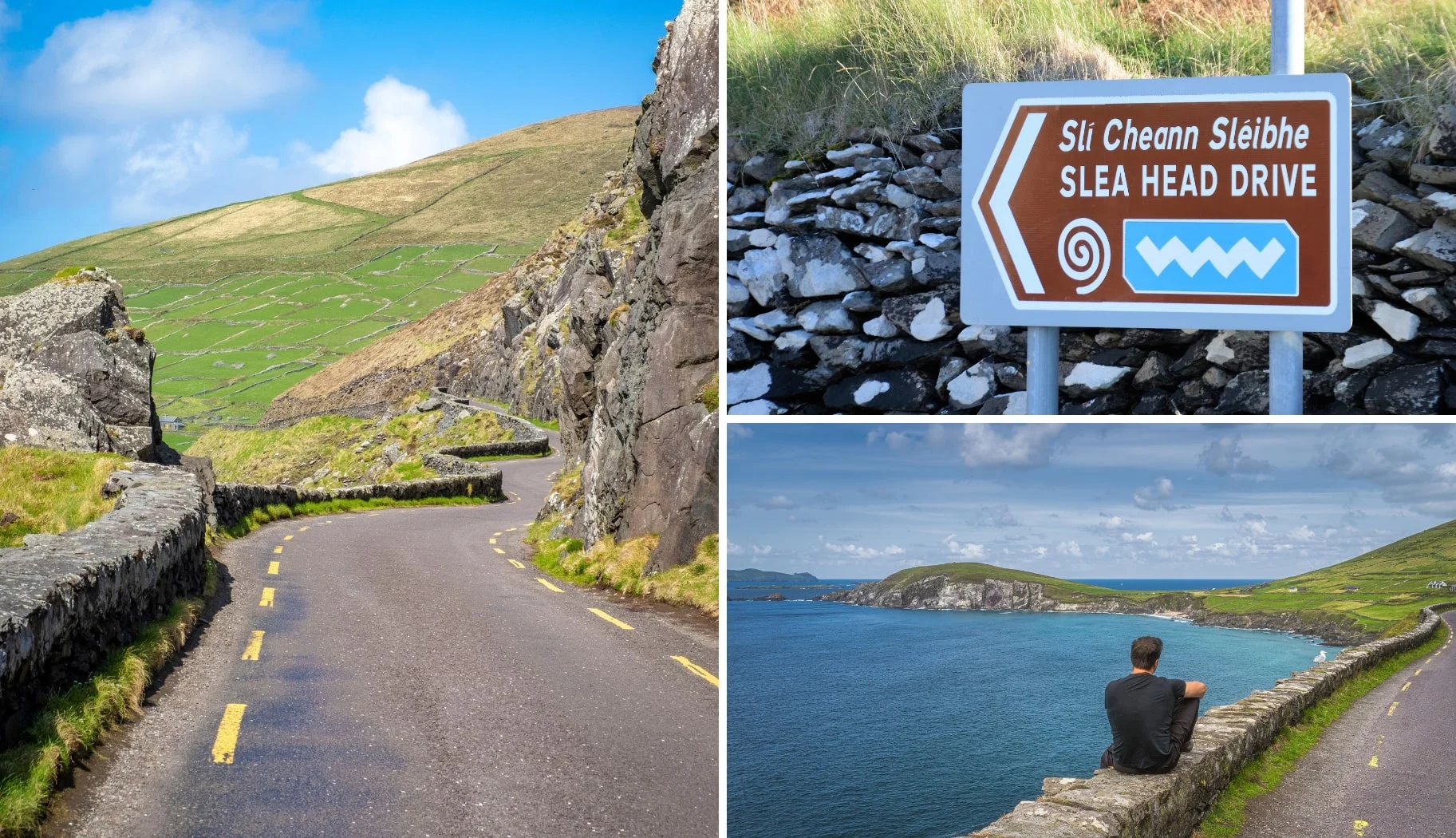
Photos via Shutterstock
Day 4 of your 7 days in Ireland sees you head off on a tour of the marvellous Dingle Peninsula.
The peninsula is on the country’s southwest coast, with rugged coastline, lovely beaches, and rolling green hills.
If you book onto this 6.5-hour guided tour you’ll be taken to the peninsula’s main attractions, including Slea Head and Dingle Town.
Start with a nice breakfast in Killarney before heading on the tour. We’d recommend getting something to eat where you’re staying, or heading to JM Reidy’s or the Shire Bar, which both do a great breakfast.
We’ll take you through the stops below, but note that 1, you may not always physically stop at all of these sights and 2, these tours are subject to change, so always check with the provider in advance.
Stop 1: Dingle Town
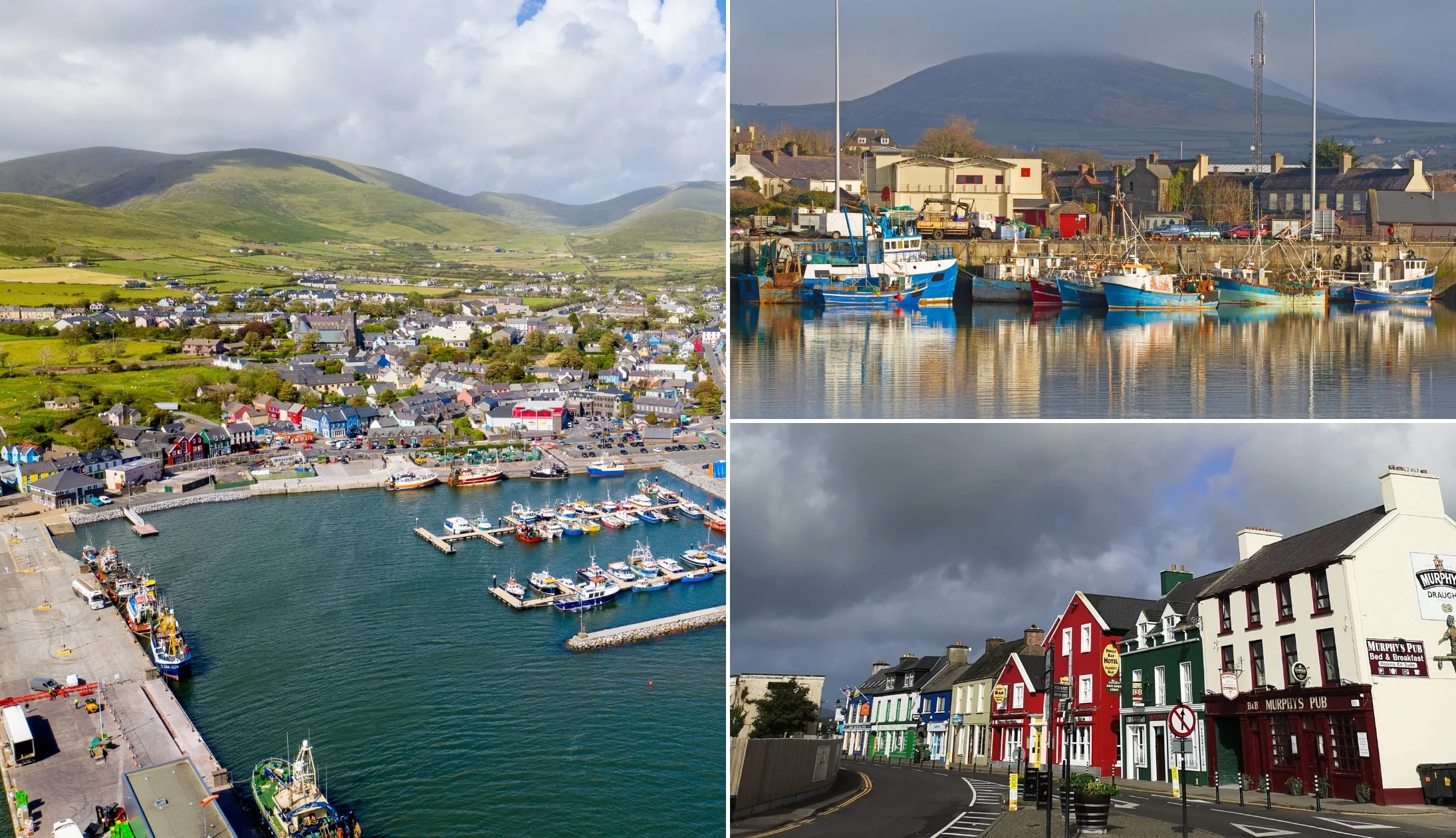
Photos via Shutterstock
Dingle Town is arguably one of the most popular towns in Ireland. It’s a colourful place on the shores of the Atlantic with a small harbour, lots of rural Irish charm, and great pubs!
Following the Norman invasion of Ireland, Dingle Town became a port, and by the 13th century, it was hugely busy, exporting more goods than Limerick. Today, its main economic activities are tourism, fishing, and agriculture.
Historically, Dingle Town has had strong ties with Spain, thanks to the Treaty of Dingle (1529), signed by the 11th Earl of Desmond and the ambassador of Emperor Charles V.
The treaty gave Irish citizens rights in Habsburg-controlled territories (Spain, the Netherlands, and Austria).
Stop 2: Slea Head

Photos via Shutterstock
Slea Head is a picturesque peninsula and one of the most westerly points in Europe. The views here are stunning and you’ll be able to look out to Blasket Island across the Atlantic.
Take some time to admire the views and look out for the iconic White Cross on the side of the road.
Stop 3: Blasket Islands views

Photos via Shutterstock
Although you won’t actually be visiting the Blasket Islands, you will have some great views from Slea Head so it’s worth knowing a little about them!
The Blasket Islands were the last islands in the country that had a significant Irish population. Sadly, due to dwindling numbers, they were abandoned in 1954.
During the 19th and 20th centuries, many writers visited the islands to document the islander’s traditional way of life, and there are several books about them.
All in all, there are six islands, the largest being Great Blasket Island and the smallest, Beginish.
Stop 4: Gallarus Oratory

Photos via Shutterstock
Gallarus dates back to the 7th and 8th centuries. The stone church is an interesting shape, with the stones laid out at an angle to allow water to run off easily.
According to legend, if you climb out of the building through the window, your soul will get cleansed. The only drawback is that the window is absolutely tiny – 18cm long and 12cm wide!
Stop 5: Back to Killarney for the night

Photos via Shutterstock
From Gallarus, it’s around a 1-hour-and-20-minute drive back to Killarney.
Our dinner recommendations
There are some exceptional restaurants in Killarney. Our favourites are the Mad Monk (they serve amazing seafood like sizzling crab claws and deep water prawn tagliatelle), Kitty O’Se (splash out on the Seafood Tower to share), and Murphy Browns (hearty Irish dishes like roasted duck and fish and chips).
Our pub recommendations
There’s some mighty old-school pubs in Killarney, too. For post-dinner drinks, head to JM Reidy’s, the Laurels Pub, or O’Connors.
They all have a traditional pub feel and are a great choice for a pint. JM Reidy’s has a lovely courtyard which is great in the summer, and O’Connors is perfect if you feel like cocktails.
If you want to hear some live music, JM Reidy’s and O’Connors often have live music sessions.
Day 5: Cork City

Photos via Shutterstock
Day 5 of your 7 days in Ireland itinerary takes you to Cork, where you’re going to spend the next two nights.
There’s some great places to stay in Cork City. Here are a few recommendations for you:
Recommended accommodation in Cork City
- Budget: Sheilas Tourist Hostel (no-fuss hostel near the train station) + Redclyffe Guesthouse (nice and central with great reviews)
- Mid-range: The Metropole (central with superb reviews) and Hotel Isaacs (in the Victorian Quarter – top-notch rooms and reviews)
- Luxury: Imperial Hotel (stunning and very central hotel) and Hayfield Manor (beautiful, boutique, city centre 5-star)
Stop 1: Take the bus or train from Killarney to Cork
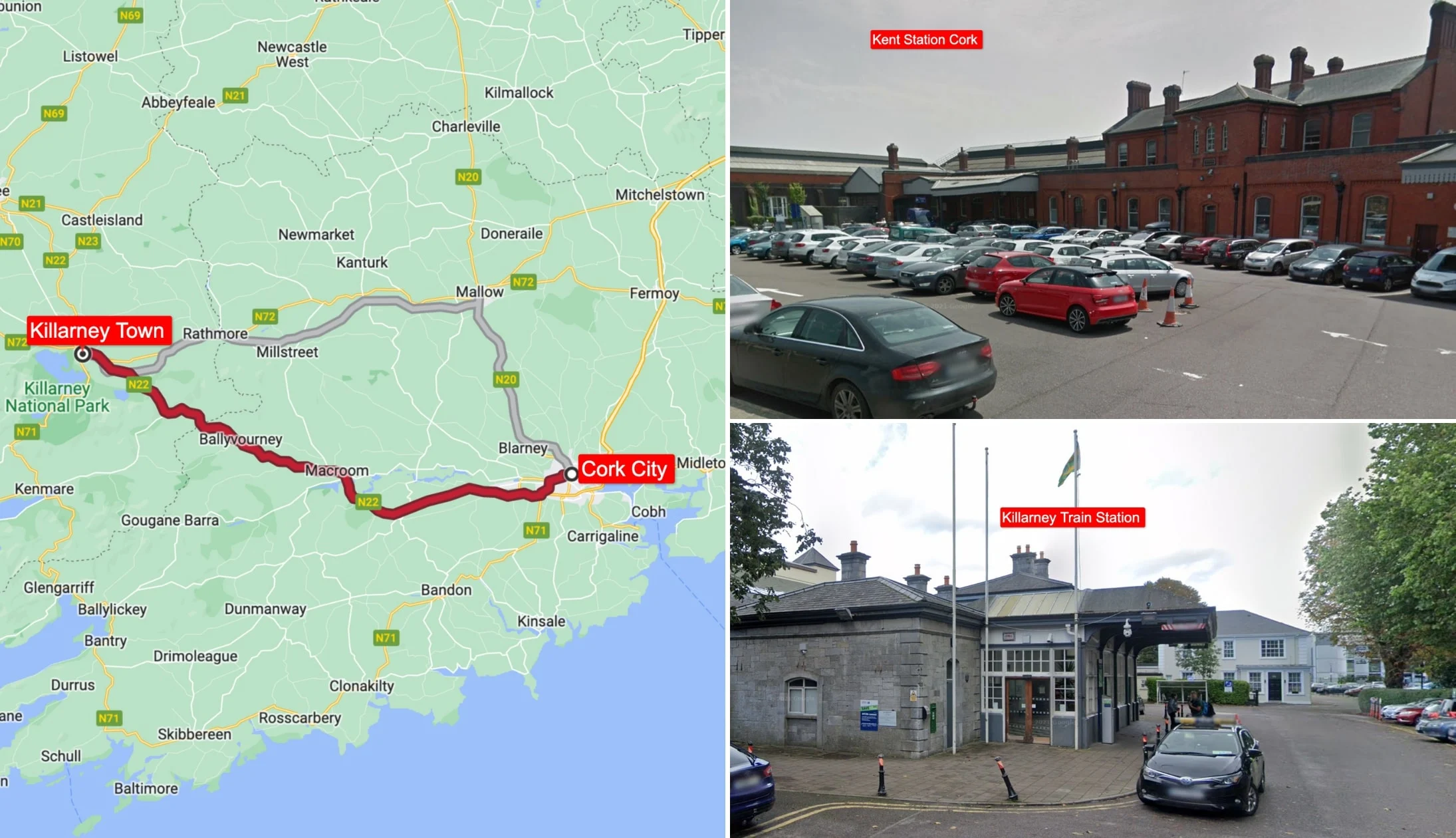
Photos via Google Maps
Grab a bite to eat at your accommodation, then make your way to the bus or train station.
Personally, we prefer taking the train as it’s quick and comfortable. Read below for more detail:
Option 1: The Train
The handiest way to get from Killarney to Cork City is via the train. There’s a direct train that takes just under 1.5 hours (find more info on the Irish Rail website).
Please do note, however, that some trains from Killarney to Cork require you to switch, so make sure to check the journey details when you book online.
Option 2: The Bus
The bus from Killarney to Cork is fairly handy as well. You need to take the Expressway service that leaves from Killarney Bus Station.
It takes just under 2 hours and drops you at Cork’s Parnell Place station.
Stop 2: Cork City
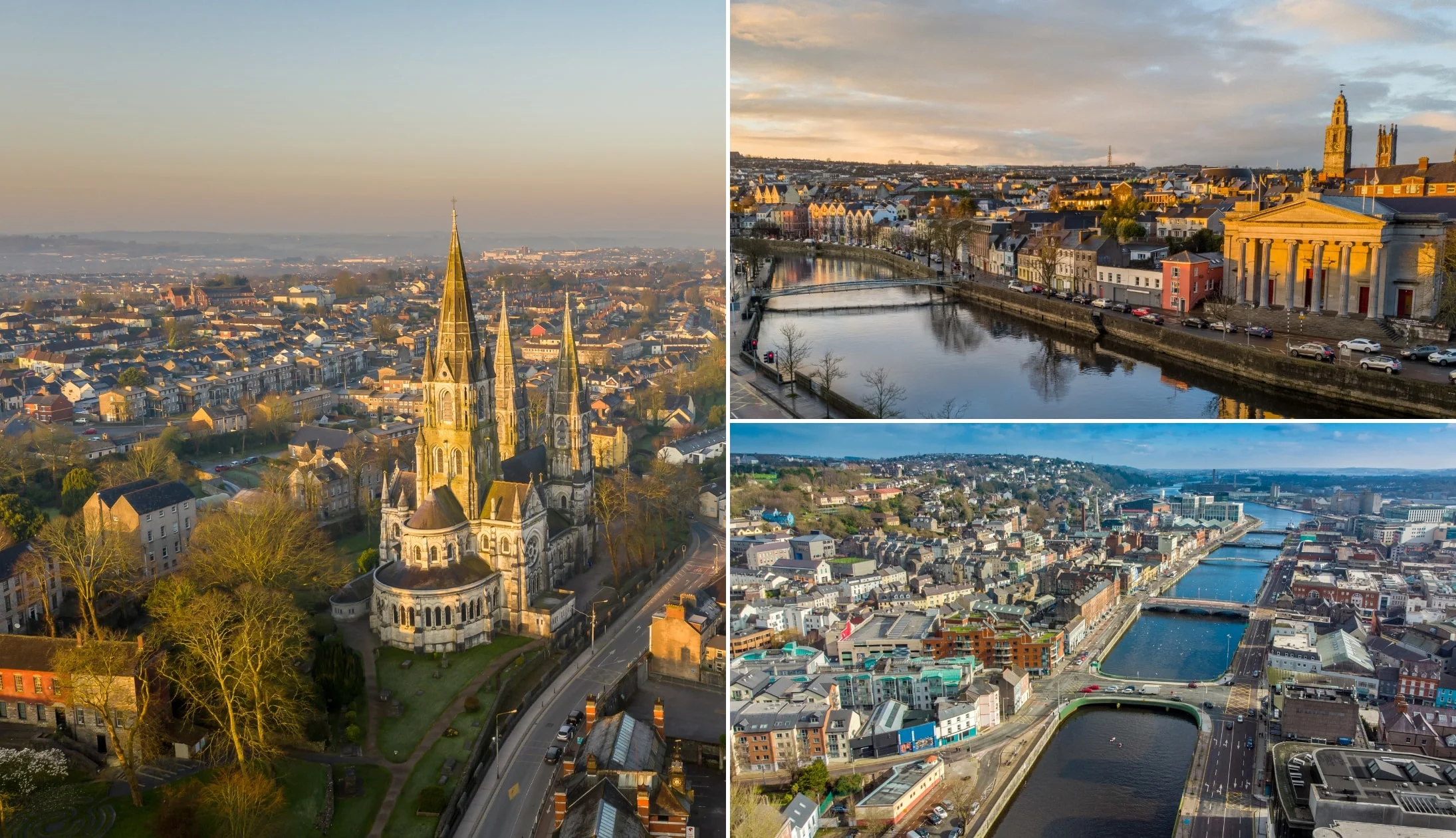
Photos via Shutterstock
Once you’ve arrived in Cork, head off to your hotel to drop off your things and freshen up (if you’ve been able to check in early). Then, get ready to explore the city on foot!
Stop 3: Shandon Bell Tower

Photos courtesy Catherine Crowley via Tourism Ireland
Shandon Bell Tower is an iconic landmark in Cork City and a must-visit attraction! The tower is a part of the Church of St. Anne, which was built in 1722. The church was built to replace an old church on the same site that was destroyed during the Seige of Cork in 1690.
You’ll need to pay a small fee to get to the top of the tower, but from the top, you’ll have wonderful views of the city, and you’ll be able to ring the bells!
From the city centre, it’s around a 10-minute walk to the Shandon Bell Tower.
Stop 4: The Butter Museum
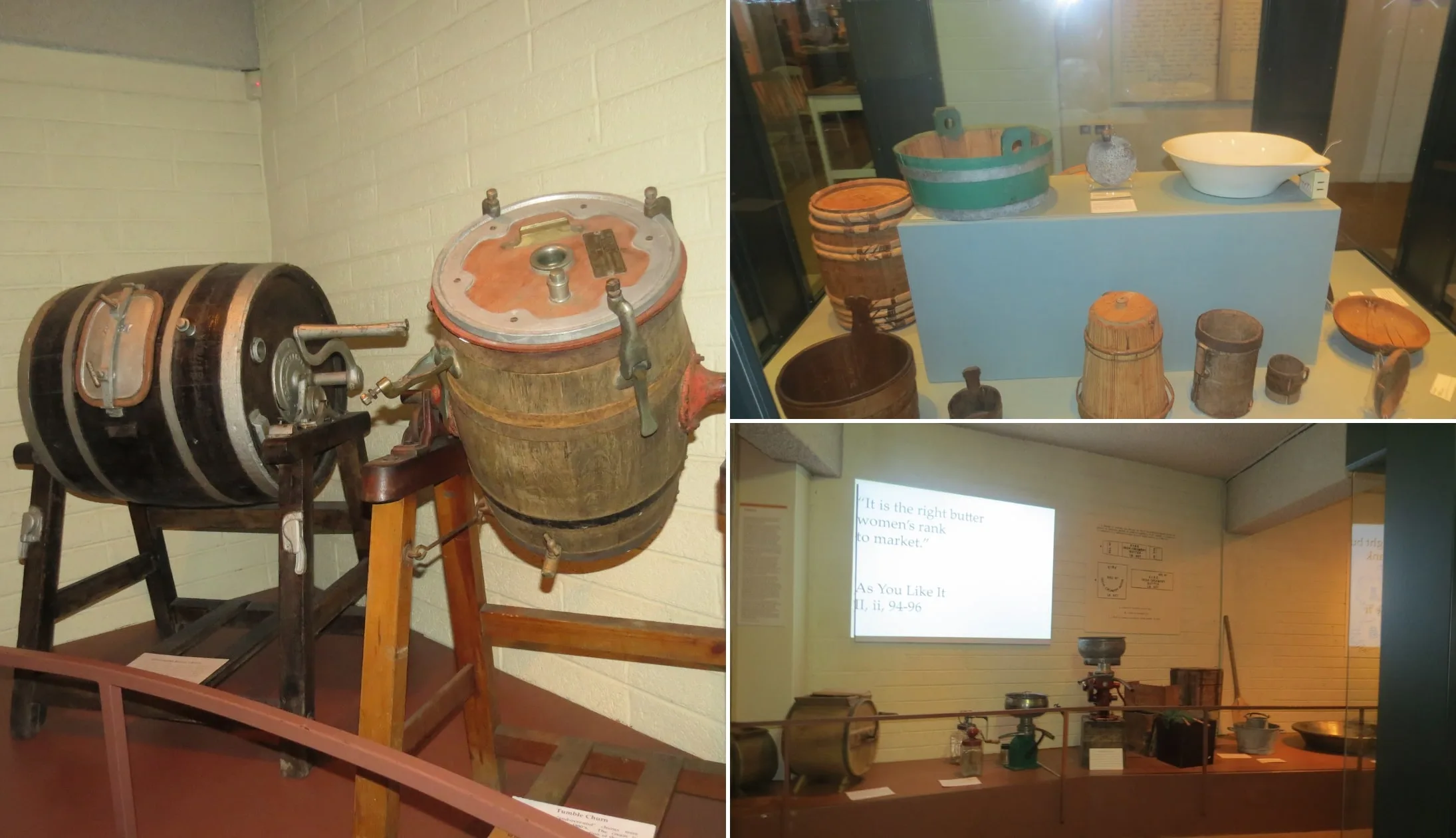
Photos courtesy Catherine Crowley via Tourism Ireland
The Butter Museum is definitely more on the unique side as far as attractions go, but since Cork used to have the largest butter market in Europe, it seems appropriate to visit.
The Cork butter industry is a large part of why Irish butter is so popular to this day.
The museum is a 2-minute walk from the bell tower, with some interesting historical info about the city as well as the butter industry.
Stop 5: Lunch in the Cornmarket

Photos via Rising Suns on FB
Walk the short 6 minutes to the Cornmarket for lunch. Be mindful that the next stop is also a foodie destination, so don’t fill up too much! We recommend popping into Bodega for delicious pub grub, the Cornstore if you’re after something a little more upmarket, or Rising Suns if you’re craving a pizza.
Stop 6: The English Market

Photos by Chris Hill via Tourism Ireland
The English Market is only 4 minutes away from the Cornmarket.
It’s a beautiful covered market with impressive mid-19th-century architecture. It’s a beautiful covered market with impressive mid-19th-century architecture. Its name, “English Market”, was to help distinguish it from the Cornmarket, formerly known as the “Irish Market”.
The market dates back to 1788, making it one of the oldest covered markets in Europe. Aside from its history and beautiful architecture, the English Market is known for its delicious food, and you can get everything from artisanal olives to homemade jams.
Stop 7: Elizabeth Fort
Once you’re finished perusing the market, walk the 10-minutes over to Elizabeth Fort. The star-shaped fort dates back to the 17th century and currently sits off Barrack Street in Cork City.
The fort was originally on high ground, but over the years, the city has built up around it, although it still has fantastic views over Cork.
General admission is free, but if you’d like to learn more about this historic fortification, guided tours are offered at 1pm every day (€5), and audio guides are available in multiple languages (€3).
Stop 8: St Fin Barre’s Cathedral

Photos via Shutterstock
St. Fin Barre’s Cathedral is just a short walk over from Elizabeth Fort. It costs €6 to enter and it’s worth every euro.
The Gothic-revival cathedral is magnificent, with three showy spies, impressive stone arches, and gargoyles decorating the outer walls.
Inside it’s even showier, with stone archways lining the sides of the nave, and a total of 74 windows, each with individually designed stained-glass panels.
However, our favourite part is the sanctuary ceiling – look up when you’re inside and you’ll see why!
The cathedral took 14 years to build, from the groundbreaking (1865) to the consecration (1879). It sits on top of a 7th-century Christian site, which is said to have been founded by St. Finbarr.
Stop 9: Dinner, drinks and live music
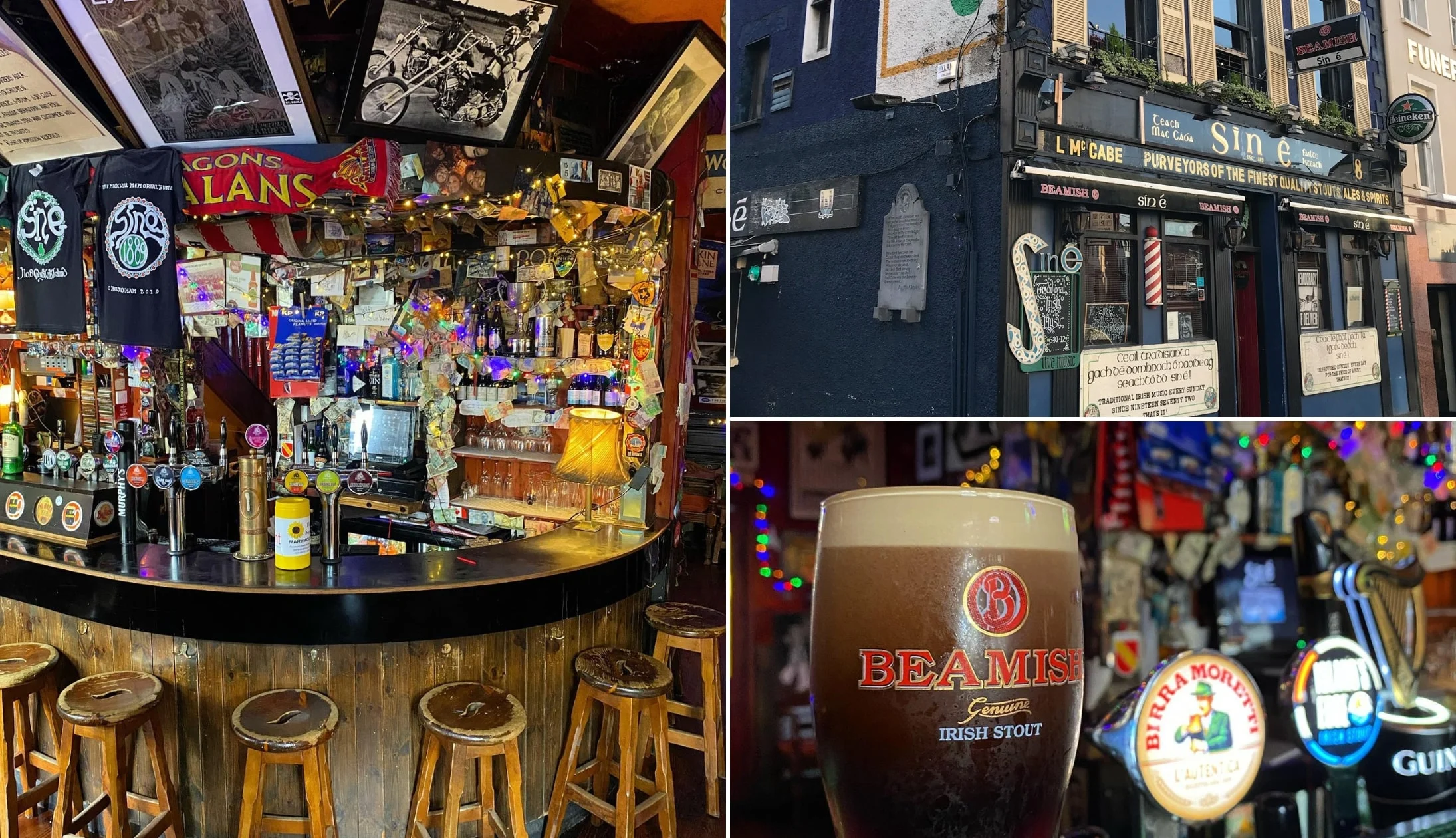
Photos via Sin E on FB
You have endless food and pub options in Cork City, regardless of what it is that you fancy on the night.
Here’s a few recommendations to get you started, but feel free to follow your nose:
Our dinner recommendations
There are heaps of brilliant restaurants in Cork City, but our personal favourites are Market Lane, Old Town Whiskey Bar at Bodega, and Cornstore.
Market Lane has a delicious-sounding menu featuring Irish favourites like pan-fried hake with braised leeks, smoked mussels, and baby potatoes, as well as international dishes like Sri Lankan vegetable curry with tempura aubergine and forbidden rice.
Head to Old Town Whiskey Bar for burgers, salads, and traditional pub grub, and Cornstore for steaks and seafood.
Live music and trad bars
There’s some might old-school pubs in Cork City, too. For drinks, check out Mutton Lane (a quirky traditional pub), The Oval (a historic pub named after its unique oval ceiling), and Castle Inn (a traditional family-run pub with a great atmosphere).
There are some great spots for hearing some trad music in Cork, our top choices are Sin E and The Corner House.
Day 6: Blarney and Cobh

Photos via Shutterstock
You’re almost halfway through your Ireland itinerary, and today, you’re heading to Blarney and Cobh. Get ready to see castles and cathedrals and to visit the Titanic’s last stop before her tragic end.
Grab a spot of breakfast in Cork before you head out for the day. We like Cafe Gusto and The Farmgate, but you could also wander around the English Market to find somewhere.
We’d recommend this 8-hour day trip that takes you to Blarney Castle and then onto the charming town of Cobh.
We’ll take you through the stops below, but note that 1, you may not always physically stop at all of these sights and 2, these tours are subject to change, so always check with the provider in advance.
Stop 1: Blarney Castle

Photos via Shutterstock
Blarney Castle is one of the most famous of the many castles in Ireland. The current castle dates back to 1446, but prior to that, there was another stone castle on the site that dated back to 1210.
Blarney Castle has an interesting history and has changed hands several times.
It was besieged during the Irish Confederate Wars, seized by parliament in 1646, and confiscated in the 1690s during the Williamite War when its owner (the 4th Earl of Clancarty) was captured.
Stop 2: The Blarney Stone

Photos via Shutterstock
The Blarney Stone is a block of grey limestone built into Blarney Castle. According to folklore, anyone who kisses the stone will be given the “gift of the gab” or the gift of flattery and eloquence.
The stone has been set into the castle walls since it was built in 1446, and it’s believed that the practice of kissing the stone dates back to the late 18th century.
Today, it’s a must-do activity in the castle, although it’s not easily achieved! To kiss the stone, you’ll need to be on your back and edge yourself closer to the stone to kiss it upside down.
There’s a large gap between the floor and the stone, but nowadays, thanks to health and safety regulations, there are metal bars to prevent you from falling if you slip through the gap.
There are several origin stories of how kissing the stone came about, from tales involving goddesses to Queen Elizabeth I, to 15th-century lawsuits.
Stop 3: Cobh

Photos via Shutterstock
Cobh is a historic coastal town in Cork City harbour that’s beautiful to stroll around regardless of the time of year.
It was the last stop of the Titanic before it departed for New York and home to St. Colman’s Cathedral.
Stop 4: St Colman’s Cathedral

Photos via Shutterstock
Cobh Cathedral, or St. Colman’s Cathedral, is one of Cobh’s iconic landmarks. It’s a gorgeous cathedral with large stained-glass windows, intricate carvings, and an impressive 90-metre spire that dominates the town’s skyline.
It took 51 years from the first cornerstone being laid to the cathedral’s consecration. Building the cathedral was a mammoth project and cost well over the initial budget.
It’s just as beautiful on the inside as it is from the outside, with large stone arches, pillars, and red marble shrines.
The cathedral is on top of a hill, so you’ll have great views over Cork Harbour.
Stop 5: Titanic Experience

Photo left: Shutterstock. Others: Via Titanic Experience Cobh
The Titanic Experience gives visitors an immersive insight into what life was like aboard the Titanic.
It includes a 30-minute tour where you’ll experience an incredible cinematographic experience of the ship sinking.
Aside from the tour, the experience has several exhibitions telling the personal stories of the passengers, the role of the RMS Carpathia in rescuing survivors, and much more.
Stop 6: Back to Cork City for the night

Photos via Sin E on FB
Here’s a few recommendations to get you started, but feel free to follow your nose:
Our dinner recommendations
There are heaps of brilliant restaurants in Cork City, but our personal favourites are Market Lane, Old Town Whiskey Bar at Bodega, and Cornstore.
Market Lane has a delicious-sounding menu featuring Irish favourites like pan-fried hake with braised leeks, smoked mussels, and baby potatoes, as well as international dishes like Sri Lankan vegetable curry with tempura aubergine and forbidden rice.
Head to Old Town Whiskey Bar for burgers, salads, and traditional pub grub, and Cornstore for steaks and seafood.
Live music and trad bars
There’s some might old-school pubs in Cork City, too. For drinks, check out Mutton Lane (a quirky traditional pub), The Oval (a historic pub named after its unique oval ceiling), and Castle Inn (a traditional family-run pub with a great atmosphere).
There are some great spots for hearing some trad music in Cork, our top choices are Sin E and The Corner House.
Day 7: Back to Shannon or Limerick

Photos via Shutterstock
OK, so your final day is completely dependent on how much time you have left/when you fly out from Shannon.
To get from Cork to Shannon, you need to take an Expressway bus from Cork Bus Station to Shannon Airport.
They should go about once an hour (make sure to check in advance) and it takes around 2 hours and 30 minutes to get to Shannon.
If you are going to stay a little longer in Limerick, don’t forget to check out our accommodation suggestions below.
Recommended accommodation in Limerick
- Budget: Woodfield House Hotel (15-minute walk from the city with excellent reviews) and Shelbourne House (cosy spot 20 minutes walk from the castle)
- Mid-range: Limerick City Hotel (very central hotel near the river) and The Bedford (very central boutique townhouse with exceptional reviews)
- Luxury: The Savoy Hotel (central, boutique 5-star) and The George (central spot on O’Connell Street in Limerick city centre)
And that’s a wrap on this road trip

Photos via Shutterstock
We hope you found the above road trip guide useful. If you have any questions, ask in the comments below and we’ll do our best to help.
Or, if you’d like to browse our other Irish Road Trip itineraries, visit our Road Trip Hub – cheers!
Keith O’Hara has lived in Ireland for 35 years and has spent most of the last 10 creating what is now The Irish Road Trip guide. Over the years, the website has published thousands of meticulously researched Ireland travel guides, welcoming 30 million+ visitors along the way. In 2022, the Irish Road Trip team published the world’s largest collection of Irish Road Trip itineraries. Keith lives in Dublin with his dog Toby and finds writing in the 3rd person minus craic altogether.

